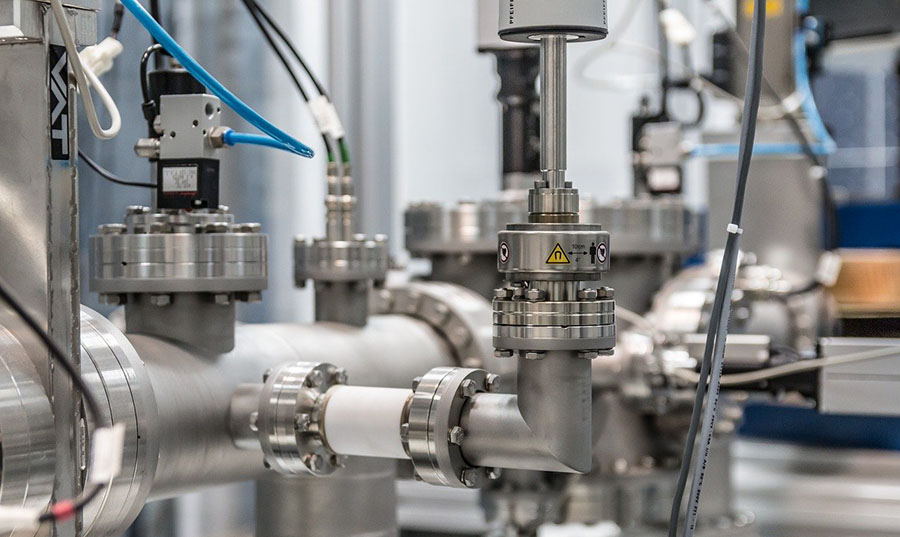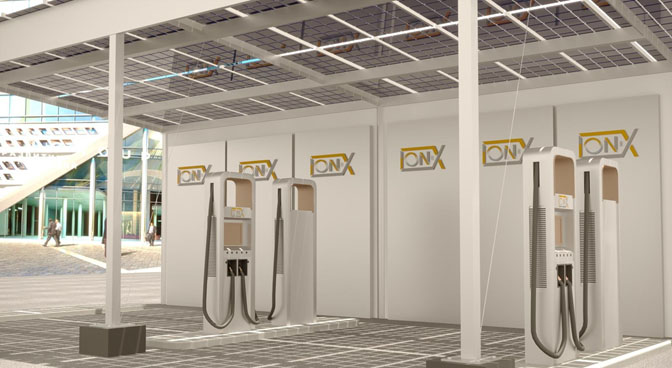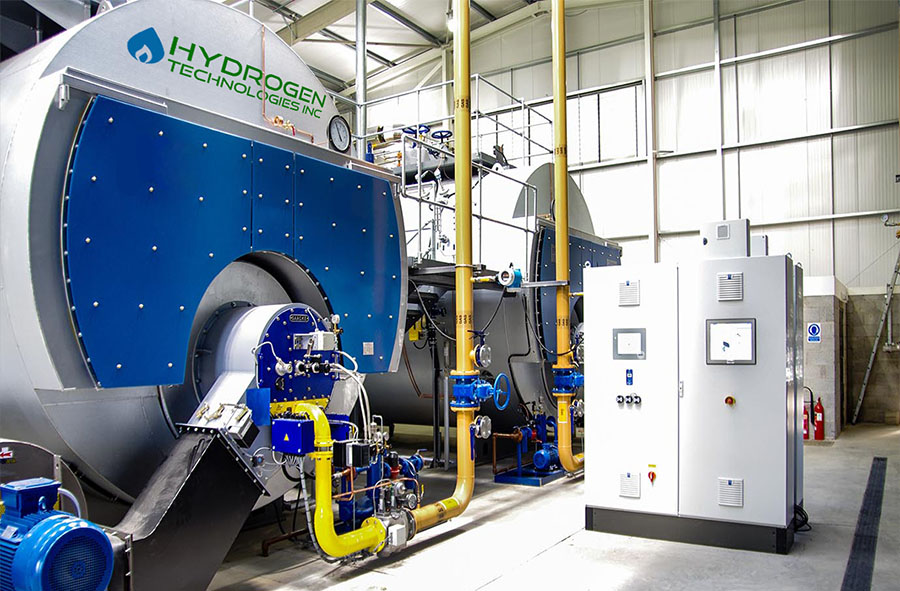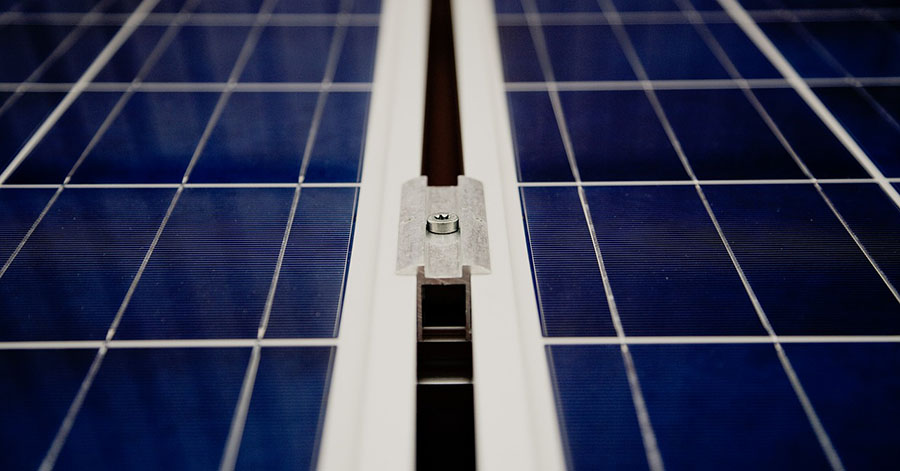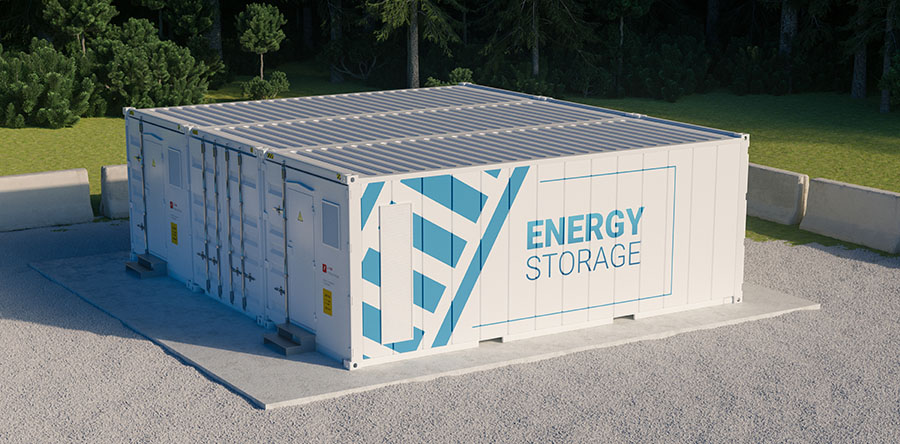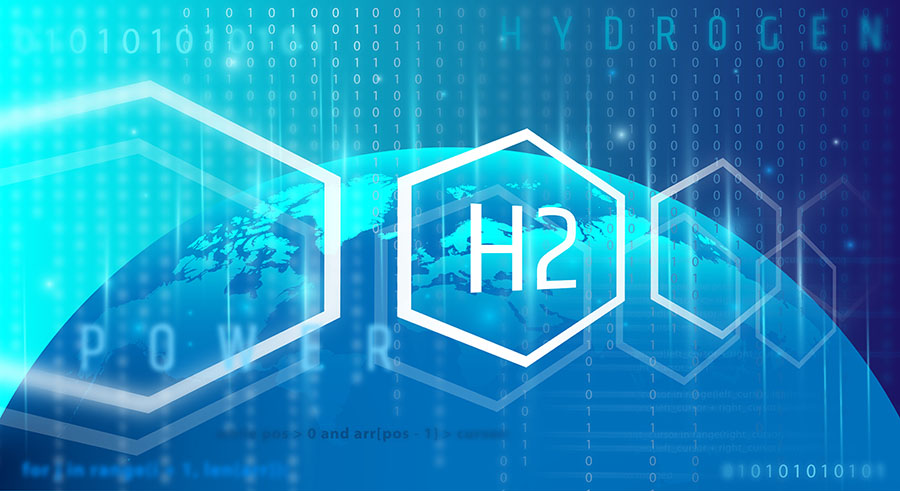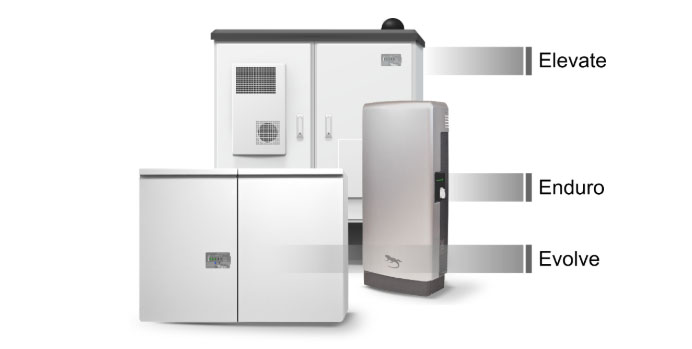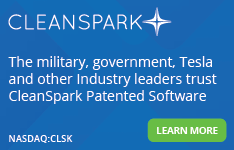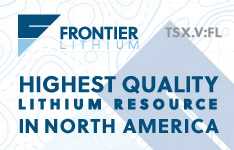Battery storage capacity surged through 2020, intensifying in Q4. Many believe increasing deployment will bleed into this year across residential, utility and vehicle markets. That trend bodes well for producers of key battery metals like lithium and nickel.
Just this week, it was discovered that Tesla is installing utility-scale battery storage in Texas, a state recently whacked by unprecedented winter storm-induced power outages. That project will compliment Enel Américas S.A.'s battery storage deployment elsewhere in the state.
Related ETF and Stocks: Amplify Lithium & Battery Technology ETF (exchange-traded fund; BATT), Tesla Inc. (TSLA:NASDAQ), Enel Américas S.A. (ENIA:NYSE), LG Chem Ltd. (051910:KSE; 051915:KSE; LGCLF:OTCPK), Albemarle Corp. (ALB:NYSE)
In the aftermath of a massive winter storm that paralyzed energy infrastructure across the southern United States, deadly and long-lasting power outages in Texas left many wondering what could be done to prevent it from happening again.
To receive all of MRP's insights in your inbox Monday–Friday, follow this link for a free 30-day trial. This content was delivered to McAlinden Research Partners clients on March 9.
As MRP noted at the time, no source of energy was spared. Oil and gas capacity was literally frozen in, along with wind and solar generation. Therefore, the answer may lie in retail and utility-scale battery storage technologies.
As Bloomberg reported, a Tesla subsidiary registered as Gambit Energy Storage LLC is quietly building a more than 100 megawatt (MW) energy storage project in Angleton, Texas, a town roughly 40 miles south of Houston. A battery that size could power about 20,000 homes on a hot summer day when the grid is especially strained.
Tesla Energy, which is already partnered with PG&E to deploy 182.5MW of battery storage in California, could represent up to 30% of the company's total revenue by the 2030s, up from roughly 6% today, according to analyst Alexander Potter of Piper Sandler. His research has highlighted the potential for Autobidder, a software platform Tesla designed for utilities.
While the Gambit project is a groundbreaking development for the future of Tesla and Texas's power grid, it's not the only battery storage project under construction in the state.
Enel Green Power North America has begun construction of a wind-plus-storage hybrid resources project known as the Azure Sky wind + storage project, pairing 350MW of wind power capacity with "approximately 137MW of battery storage" in Throckmorton County, Texas. As Energy Storage News reports, this will be Enel's first-ever large-scale wind project combined with battery storage, and third renewables-plus-storage hybrid in total. All three are being built in Texas.
For all of 2020's pitfalls, it was a great year for battery installations. Per Wood Mackenzie, more batteries were powered up in the last three months of 2020 than in 2013 through 2019 combined.
"We had, in 2020, a total of about 3,500 megawatt-hours deployed this year as a whole," WoodMac analyst Chloe Holden said. That's about the amount of electricity that 329 American homes consume in a year. "In 2021, we expect to see that climb by almost four times," she continued. After that huge spike, which is predicted based on previously announced projects, Wood Mackenzie estimates more gradual growth through 2025.
This year is equally as promising, as the U.S. battery energy storage market is set to grow from 1.2 gigawatts (GW) in 2020 to nearly 7.5GW in 2025, driven primarily by large-scale utility procurements.
The Energy Information Administration (EIA) expects the capacity of utility-scale battery storage to more than quadruple in 2021, with 4.3GW of battery power capacity additions slated to come online. The rapid growth of renewables, such as wind and solar, is a major driver in the expansion of battery capacity, because battery storage systems are increasingly paired with renewables.
Investment in battery storage has been helped along by tumbling battery prices over the last few years. Last October, the EIA announced that the average cost of utility-scale battery storage in the U.S. decreased by nearly 70% between 2015 and 2018.
"If you look at what's going on in storage, in about 10 years—2030—the battery industry will grow about 10 times bigger," Yi Cui, the director of Stanford University's Precourt Institute for Energy, has recently predicted. "That's reaching somewhere about 2 terawatt-hours of the battery capacities," he added.
Battery storage often works in tandem with green technologies to accelerate a shift to renewable energy. Some research shows that a large-scale buildout of batteries will be absolutely necessary to facilitate the transformation. A report by the University of California, Berkeley, exploring the shift to renewable power, suggests the United States would need 150GW of storage to achieve a 90% clean energy grid by 2035.
Tesla and LG Chem currently dominate the U.S. home battery market. Both use the lithium-nickel-manganese-cobalt-oxide (NMC) chemistry favored by the electric vehicle (EV) industry. Each of the companies also play a huge role in the growth of battery-powered EVs.
General Motors (GM) is currently working on plans to build a second battery factory in the U.S. with LG Chem as joint-venture partner. The Wall Street Journal notes that the two companies are building a $2.3 billion battery plant in northeast Ohio that is expected to open next year and eventually supply enough batteries to power hundreds of thousands of vehicles annually. The new plant is likely to be a similar-size investment, some of the people said.
As we noted back in August, there are over 100 battery megafactories planned around the world.
According to Adamas Intelligence, Tesla and its world-renowned "gigafactories" deployed more passenger EV battery capacity and battery materials, namely lithium, nickel and graphite, than its four closest competitors combined in 2020. That level of production was great news for LG, since Tesla's made-in-China Model 3s include high-nickel NCM 811 cells from LG Chem.
Adamas' report, cited by Mining.com, highlights the fact that nearly 20% of all passenger EV battery capacity deployed onto roads by LG Energy Solution—a spinoff of LG Chem—went into made-in-China Tesla Model 3s last year. China currently dominates the market for producing electric vehicle batteries, producing 79% of the world's supply, according to BloombergNEF.
The country's vehicle market, the largest in the world, is increasingly critical when it comes to electrification. EV sales are expected to rise by 40% from a year earlier, to 1.8 million units, per the China Association of Automobile Manufacturers (CAAM).
On the last day of 2020, China's Contemporary Amperex Technology Co. Ltd. (CATL) announced a 39 billion yuan ($5.9 billion) investment into three new battery factories in China.
According to S&P Global Platts' China Battery Metals Outlook for 2021, some 96% of respondents expected China's demand for lithium metals to rise further this year, with stimulus measures expected to boost demand for EVs. Between 91% and 78% of market participants canvassed thought China's battery-grade lithium carbonate and hydroxide prices will be higher this year than last. About 56% believed there will be a big recovery in the battery metals sector this year.
While the lithium supply is always the top focus for battery producers, Tesla is becoming increasingly concerned with nickel. Just last week, the company agreed to partner with a nickel mine in New Caledonia in an effort to secure more of the resource. Not long before inking that deal, Elon Musk, the CEO of Tesla, tweeted, "Nickel is our biggest concern for scaling lithium-ion cell production."
Benchmark nickel prices were trading at a six-year high as recently as last week on expectations surging demand from the electric-vehicle sector would spur a shortage.
Lithium faces similar worries, as MRP noted last month. Per Albemarle Corp., global supplies of lithium used to make most batteries may fall short of projections for demand to more than triple by 2025 if prices do not rebound to fund expansions. We have been sounding the alarm on a potential supply crunch in the lithium market since 2018.
In that same vein, MRP launched our LONG Battery Metals theme on Aug. 14, 2020. To track the performance of this theme, we have utilized the Amplify Advanced Battery Metals and Materials ETF (BATT).
BATT provides exposure to lithium, as well as the other metals critical for battery storage capacity—particularly cobalt, nickel, manganese and graphite—via publicly traded stocks. Companies in the portfolio are principally engaged in the business of mining, exploration, production, development, processing or recycling of advanced battery metals and materials.
Since the launch of the theme, BATT has returned 42%, more than tripling an S&P 500 gain of 13% over the same period.



Originally published March 9, 2021.
 McAlinden Research Partners (MRP) provides independent investment strategy research to investors worldwide. The firm's mission is to identify alpha-generating investment themes early in their unfolding and bring them to its clients' attention. MRP's research process reflects founder Joe McAlinden's 50 years of experience on Wall Street. The methodologies he developed as chief investment officer of Morgan Stanley Investment Management, where he oversaw more than $400 billion in assets, provide the foundation for the strategy research MRP now brings to hedge funds, pension funds, sovereign wealth funds and other asset managers around the globe.
McAlinden Research Partners (MRP) provides independent investment strategy research to investors worldwide. The firm's mission is to identify alpha-generating investment themes early in their unfolding and bring them to its clients' attention. MRP's research process reflects founder Joe McAlinden's 50 years of experience on Wall Street. The methodologies he developed as chief investment officer of Morgan Stanley Investment Management, where he oversaw more than $400 billion in assets, provide the foundation for the strategy research MRP now brings to hedge funds, pension funds, sovereign wealth funds and other asset managers around the globe.
|
|
Sign Up |
Disclosure:
1) McAlinden Research Partners disclosures are below.
2) The following companies mentioned in this article are billboard sponsors of Streetwise Reports: None. Click here for important disclosures about sponsor fees. The information provided above is for informational purposes only and is not a recommendation to buy or sell any security.
3) Statements and opinions expressed are the opinions of the author and not of Streetwise Reports or its officers. The author is wholly responsible for the validity of the statements. The author was not paid by Streetwise Reports for this article. Streetwise Reports was not paid by the author to publish or syndicate this article. Streetwise Reports requires contributing authors to disclose any shareholdings in, or economic relationships with, companies that they write about. Streetwise Reports relies upon the authors to accurately provide this information and Streetwise Reports has no means of verifying its accuracy.
4) This article does not constitute investment advice. Each reader is encouraged to consult with his or her individual financial professional and any action a reader takes as a result of information presented here is his or her own responsibility. By opening this page, each reader accepts and agrees to Streetwise Reports' terms of use and full legal disclaimer. This article is not a solicitation for investment. Streetwise Reports does not render general or specific investment advice and the information on Streetwise Reports should not be considered a recommendation to buy or sell any security. Streetwise Reports does not endorse or recommend the business, products, services or securities of any company mentioned on Streetwise Reports.
5) From time to time, Streetwise Reports LLC and its directors, officers, employees or members of their families, as well as persons interviewed for articles and interviews on the site, may have a long or short position in securities mentioned. Directors, officers, employees or members of their immediate families are prohibited from making purchases and/or sales of those securities in the open market or otherwise from the time of the decision to publish an article until three business days after the publication of the article. The foregoing prohibition does not apply to articles that in substance only restate previously published company releases. As of the date of this article, officers and/or employees of Streetwise Reports LLC (including members of their household) own securities of Tesla Inc., a company mentioned in this article.
McAlinden Research Partners:
This report has been prepared solely for informational purposes and is not an offer to buy/sell/endorse or a solicitation of an offer to buy/sell/endorse Interests or any other security or instrument or to participate in any trading or investment strategy. No representation or warranty (express or implied) is made or can be given with respect to the sequence, accuracy, completeness, or timeliness of the information in this Report. Unless otherwise noted, all information is sourced from public data.
McAlinden Research Partners is a division of Catalpa Capital Advisors, LLC (CCA), a Registered Investment Advisor. References to specific securities, asset classes and financial markets discussed herein are for illustrative purposes only and should not be interpreted as recommendations to purchase or sell such securities. CCA, MRP, employees and direct affiliates of the firm may or may not own any of the securities mentioned in the report at the time of publication.



